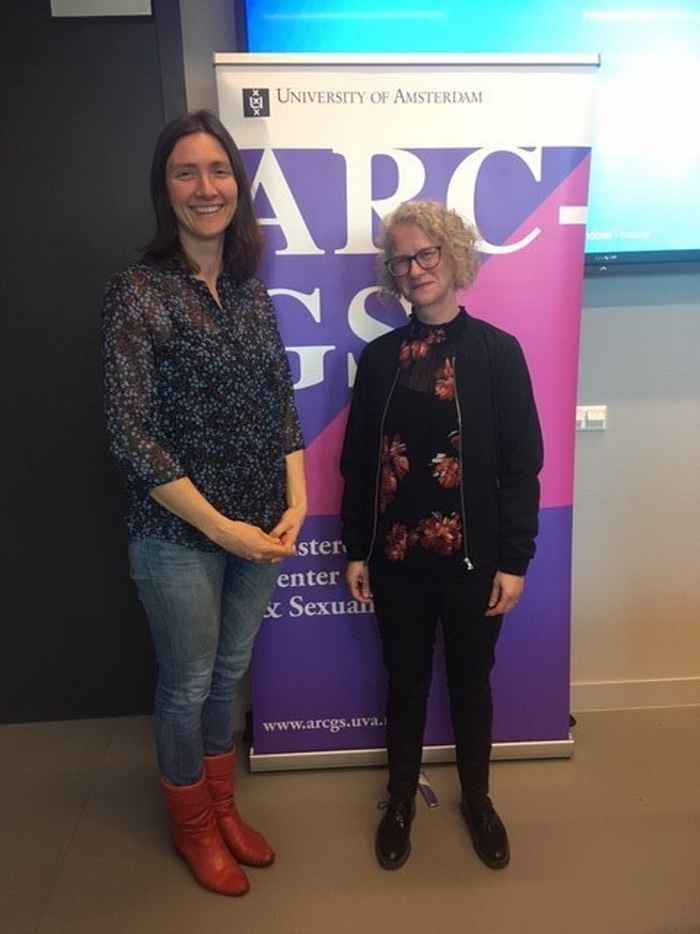“The transition to parenthood in different-sex and female same-sex couples in Sweden. Identity formation, gender and the division of paid and unpaid work” Lecture by Professor Marie Evertsson (Stockholm University, Sweden)
By Simone Schneider
Same-sex parenthood in Sweden
Same-sex parenthood is officially recognized in Sweden since 2003, with same-sex and different-sex couples nowadays possessing similar legal rights. Same-sex couples can register themselves if they wish to become parents and are transferred to a waiting list for their first child together. Despite the legal status of same-sex parenthood in Sweden, scholars know little about the transition of same-sex couples to parenthood, for example with regards to which partner becomes the birth mother.

Swedish population register data
Evertsson and her colleagues analyzed Swedish population register data to examine the transition to parenthood in same-sex couples and to compare those findings with the transition to parenthood in different-sex couples. Through this methodological approach, Evertsson could relate parental decisions, for example which partner becomes the birth mother and a couple’s income trajectories after their first child’s birth, to other possible predictors, such as age, economic dependency, a couple’s length of marriage and education.
Parenthood as a two-step decision process
Evertsson explained that the theoretical assumption is that transition to parenthood in female same-sex couples takes place in a two-step decision process. Initially, the couple decides if they want to become parents and weighs the costs and benefits of having a child. Subsequently, the couple agrees on which partner will become the birth mother. This second decision is influenced by different factors, such as preferences for pregnancy, income or opportunities for parental leave. Furthermore, the second decision can be made based on specialization, where one partner specializes in home production and care work while the other partner specializes in generating income and providing monetary security. Different factors, such as age, health or income of both individuals can influence that decision-making process.
Shares of parental leave
Many female same-sex couples become parents within one or two years after they have married. Additionally, couples with a higher overall income are more likely to become parents than couples with a lower overall income. Furthermore, it is more likely that the partner with higher education and slightly higher income becomes the birth mother. Based on those findings, Evertsson argued that individuals in female same-sex couples do not specialize strongly in either care work or monetary income, as only small income differences exist within such couples. Compared to different-sex couples, female same-sex couples share their parental leave more equally, are less likely to specialize and experience a smaller within-couple income gap before and after their first child’s birth. Evertsson also noted that birth mothers in different-sex couples take longer parental leaves compared to birth mothers in female same-sex couples. To further examine the transition to parenthood in same-sex and different-sex couples, Evertsson and her colleagues will conduct a multi-method, comparative study including qualitative interviews in Sweden and the Netherlands.